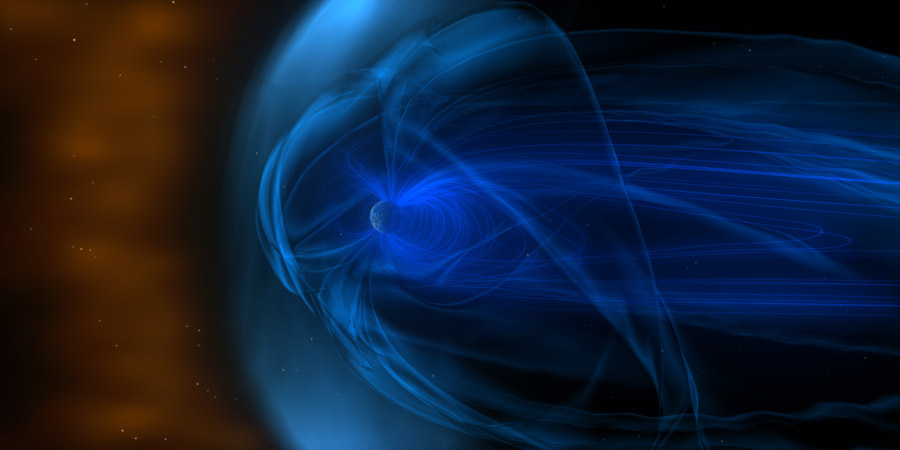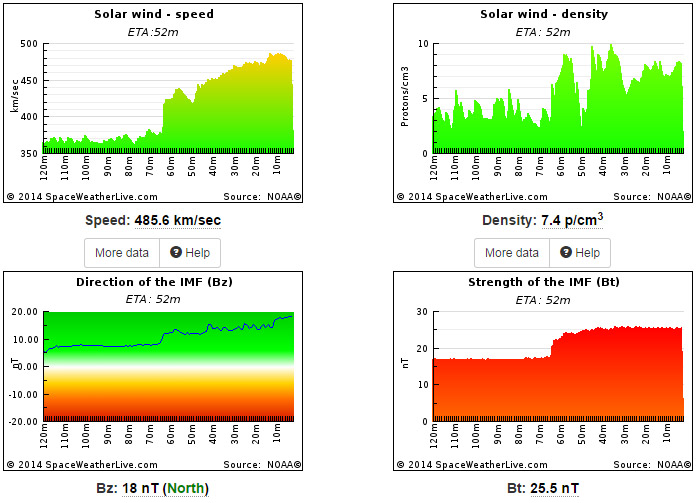X1.8 coronal mass ejection arrival
Monday, 22 December 2014 16:00 UTC

Another coronal mass ejection has arrived at earth, this is likely the X1.8 coronal mass ejection that was expected to miss earth. The direction of the IMF is however not cooperating and is pointing firmly north.
The speed of the solar wind increased to about 480km/s and the total strength (Bt) of the IMF increased from 15nT to 25nT which is a high value. The direction of the IMF however went north and looks to be staying there which is bad news for enhanced auroral conditions. However, should the direction of the IMF go south then we can easily see more G1 geomagnetic storming and perhaps even an isolated period of G2 geomagnetic storming. It is however vital that the direction of the IMF (Bz) turns south for an extended period of time. Below the stats as measured by ACE at the time of publishing this article.

Sky watchers from Scotland, Scandinavia, Finland and the upper United States should remain alert in the hours ahead for visible aurora if we reach G1 storm conditions around local midnight. As said, it is however vital that the IMF turns southward in order to reach the G1 minor geomagnetic storm threshold!
You can follow the impact live on our auroral activity page. Unsure what all those numbers and graphs mean? Just want to know if there is a chance to see aurora? Check out our auroral oval page!
Thank you for reading this article! Did you have any trouble with the technical terms used in this article? Our help section is the place to be where you can find in-depth articles, a FAQ and a list with common abbreviations. Still puzzled? Just post on our forum where we will help you the best we can!
Latest news
Latest forum messages
Support SpaceWeatherLive.com!
A lot of people come to SpaceWeatherLive to follow the Sun's activity or if there is aurora to be seen, but with more traffic comes higher server costs. Consider a donation if you enjoy SpaceWeatherLive so we can keep the website online!

Space weather facts
| Last X-flare | 2025/03/28 | X1.1 |
| Last M-flare | 2025/05/12 | M1.9 |
| Last geomagnetic storm | 2025/05/03 | Kp5 (G1) |
| Spotless days | |
|---|---|
| Last spotless day | 2022/06/08 |
| Monthly mean Sunspot Number | |
|---|---|
| April 2025 | 140.6 +6.4 |
| May 2025 | 76.7 -63.9 |
| Last 30 days | 100.9 -32 |


